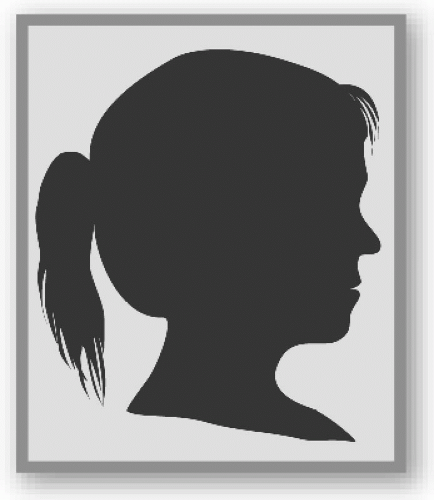Borderline Personality
LEARNING OBJECTIVES
The reader will be able to:
Understand the differences and relationship between pharmacotherapy and psychotherapy for the treatment of borderline personality disorder.
Develop strategies for combined or sequenced treatment approaches for borderline personality disorder.
Enhance skills to negotiate these treatment approaches with patients.
Ms. S is a 23-year-old, single woman who was seen in the emergency department following a suicide attempt and admitted to the hospital for further assessment. She reported feeling out of control and overwhelmed following the break up of a 6-month relationship. As a result, she took an overdose of acetaminophen and called her family soon after. She had been in and out of treatment for the previous 4 years but had not seen her therapist in the last 7 months.
Borderline personality disorder is listed as a Cluster B subtype which includes antisocial, histrionic, and narcissistic personality disorders as well. It is characterized by:
Unstable affect
Stormy interpersonal relationships
Behavioral dyscontrol
The estimated prevalence of this Axis II disorder is 1% to 2%. It is often complicated by Axis I mood disorders (e.g., 25% to 75% experience major depression, 5% to 20% meet criteria for bipolar disorder). In addition, 70% abuse alcohol or other drugs and 25% of bulimic patients also meet criteria for this personality disorder. Self-destructive and suicidal behaviors are common. Physical or sexual abuse, trauma, and neglect are frequent antecedents to this condition. Physical disorders of the central nervous system (CNS) (e.g., neurodevelopmental, acquired brain insults) have also been considered as potential predisposing factors.
DIFFERENTIAL DIAGNOSIS
Affective, impulsive, and psychotic symptoms frequently complicate this condition. These presentations are the basis for the major differential diagnostic considerations, including:
Mood disorders
Impulse control disorders
Schizophrenia
NEUROBIOLOGY
The frequent observation that family members of borderline patients often manifest impulse control disorders suggests a possible genetic-related condition. Disinhibition is a hallmark of such disorders and may contribute to the parental abuse patterns that pervade the history of borderline patients.
Another line of evidence is the observation that injuries to the prefrontal and orbitofrontal cortical areas can produce borderline-like behaviors. Further, both structural and functional neuroimaging studies also support dysfunction in the frontolimbic network.1
TREATMENT OF BORDERLINE PERSONALITY DISORDER
Pharmacotherapy of Borderline Personality Disorder
It is difficult to do well-controlled clinical trials with highly disturbed, suicidal patients such as those with severe borderline features. Therefore, most studies involve small sample sizes. The three leading major medication strategies include the use of antidepressants (ADs), antiepileptic drugs (AEDs), and second-generation antipsychotics (SGAs). While benzodiazepines are also frequently prescribed; problems with abuse, dependency, and possible further disinhibition should limit their use (see Table 9-1).
Antidepressants.
Two small-sample, controlled studies provided some evidence that monoamine oxidase inhibitors (MAOIs) such as tranyclypromine may benefit borderline personality and related disorders. Whereas open trials with selective serotonin reuptake inhibitors (SSRIs) (e.g., fluoxetine and sertraline) indicated these agents may be most effective for impulsive aggression and irritability; placebo-controlled trials supported their benefit for affective instability and anger but not for impulsivity, aggression, unstable relationships, suicidality, and global functioning.2,3
TABLE 9-1 Medications for Treatment of Borderline Personality Disorder | ||||||||||||||||||||||||||||||||||||||||||||
|---|---|---|---|---|---|---|---|---|---|---|---|---|---|---|---|---|---|---|---|---|---|---|---|---|---|---|---|---|---|---|---|---|---|---|---|---|---|---|---|---|---|---|---|---|
| ||||||||||||||||||||||||||||||||||||||||||||
While both MAOI and SSRI trials found these agents helpful for impulsivity, some also demonstrated effectiveness in controlling mood. As the SSRIs produce AD as well as anti-impulsivity and antiaggression properties, they are frequently used in this population. Because these patients are prone to suicide attempts, it is important to remember that first-generation ADs (e.g., tricylic antidepressants [TCAs], MAOIs) are potentially lethal in overdose. By contrast, the SSRIs are very safe.
Antiepileptic Drugs.
Open and randomized controlled trials indicate that AEDs (e.g., lamotrigine, topiramate, divalproex) may be more effective than ADs in controlling various symptoms of borderline personality disorder.
In an open case series, Pinto and Akiskal4 found that several treatment-resistant borderline patients (particularly those with a bipolar component to their illness) had a robust response to lamotrigine over a 1-year period. In addition, one patient had an excellent response to divalproex. More recent, controlled trials support the benefit of lamotrigine for both short-term and long-term control of aggression and anger in women.5,6 Data also support the benefit of topiramate to manage anger, aggression, and depressive symptoms in both women and men.7,8
Antipsychotics.
Borderline patients often present with psychotic features. In this context, several placebo-controlled studies indicate that antipsychotics are efficacious in these patients. More recently, trials with aripiprazole demonstrated both acute and longer-term benefit over 18 months.9,10 Further, this drug positively impacted most symptoms (i.e., not just psychosis) associated with borderline personality disorder. An observational trial of acute parenteral olanzapine also demonstrated good tolerability and efficacy for agitated borderline patients.
Stay updated, free articles. Join our Telegram channel

Full access? Get Clinical Tree








